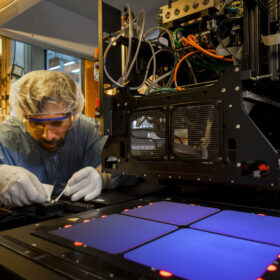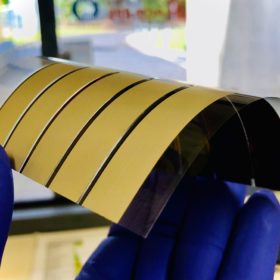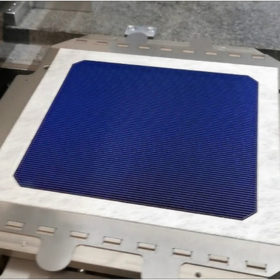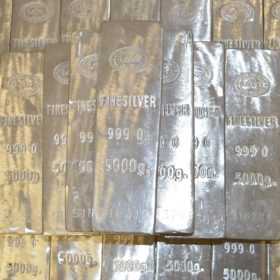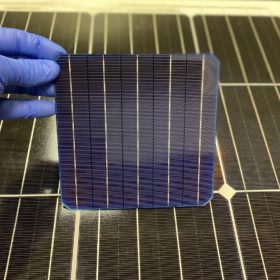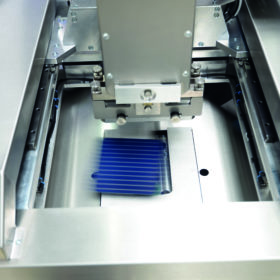Novel approach to identify silver shortages in PV industry
A Dutch-German research team has used a unique method to detect silver shortages in the PV industry. By mapping the silver supply chain from 1995 to 2021, they have identified distinct supply patterns and associated risks.
Average silver price expected to drop 2% to $21.30 per ounce this year
The US Silver Institute’s “World Silver Survey 2022” report shows that the price of the metal will fall slightly this year despite increasing demand from the PV industry.
Only5mins! – Silver price outlook and PV industry impact
Michael DiRienzo, executive director of The Silver Institute, tells pv magazine that average silver prices will hover around $23 per ounce this year, without any anticipated supply disruptions for the solar industry.
Solar Inventions gets patent for silver-saving configurable current solar cells
Solar Inventions has patented technology that could save between $2 million and $5 million per gigawatt in solar projects, while also raising rated power output. The company has patents in the United States, China and Israel for its cell configuration.
Flexible, roll-to-roll printed perovskite solar cell hits 16.7% efficiency
Australian scientists have demonstrated a flexible perovskite solar cell using roll-to-roll compatible “printing” type processes, which could potentially be applied in large-scale manufacturing. Of particular note is the development of a viable roll-to-roll process to deposit the electrode layer, which has thus far been a major challenge. Cells fabricated by the group achieved a maximum efficiency of 16.7%.
Heterojunction solar cells with lower silver consumption via rotary screen printing
Scientists from the Fraunhofer ISE built a bifacial heterojunction solar cell with a power conversion efficiency of 21.7% via rotary screen printing. They used a machine that is able to achieve a cycle time of just 0.6 seconds per solar cell and enables a strong reduction in silver use.
Average silver price expected to drop 1% to $24.80 per ounce this year
According to the Silver Institute, global industrial silver demand is expected to grow 8% this year due to strong demand in all key sectors, including the PV industry.
Novel solar cell architecture to reduce silver costs, improve voltage
Developed by a U.S.-based start-up, the new manufacturing process is claimed to reduce silver consumption and improve solar module performance by up to 3 W. It consists of connecting sub-cells in series within a single cell in order to increase the device voltage and without requiring cells to be physically broken and rewired.
Simulating PV’s silver future
Scientists at Germany’s Fraunhofer ISE developed a model to simulate different setups for screen printing in solar cell metallization. The model provides a comparable ‘screen utility index’ value that can predict the usefulness of different architectures in the printing equipment in relation to the properties of a given silver paste. The approach, says Fraunhofer, will assist the PV industry in reducing the amounts of silver needed in silicon cell manufacturing.
Silver accounts for 10% of PV module costs
The share of silver in the total cost of PV modules has increased by around 5% in recent months, according to US analyst Matthew Watson. He told pv magazine that silver prices are set to rise, adding that the metal will eventually account for an even larger percentage of overall module costs.
